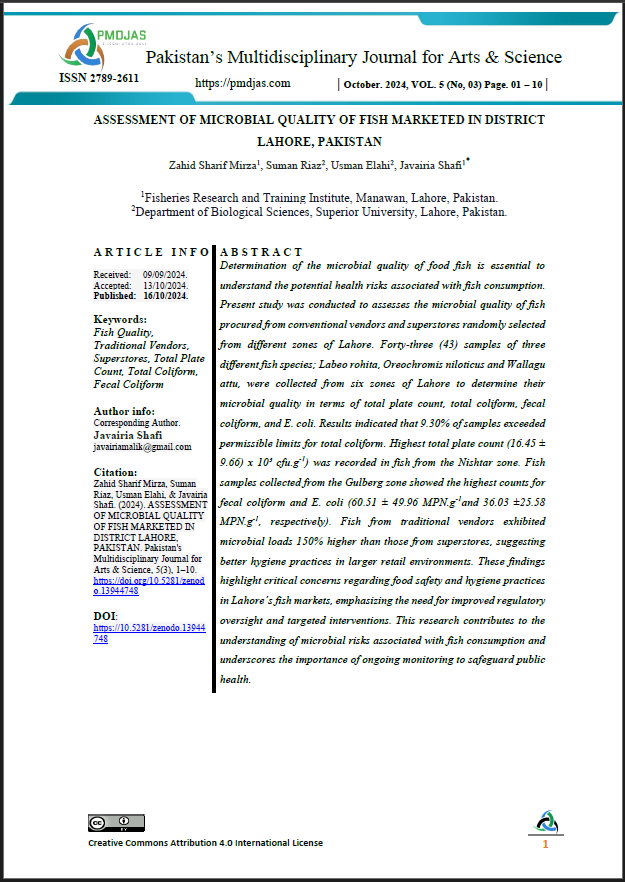ASSESSMENT OF MICROBIAL QUALITY OF FISH MARKETED IN DISTRICT LAHORE, PAKISTAN
DOI:
https://doi.org/10.5281/zenodo.13944748Keywords:
Fish Quality, Traditional Vendors, Superstores, Total Plate Count, Total Coliform, Fecal ColiformAbstract
Determination of the microbial quality of food fish is essential to understand the potential health risks associated with fish consumption. Present study was conducted to assesses the microbial quality of fish procured from conventional vendors and superstores randomly selected from different zones of Lahore. Forty-three (43) samples of three different fish species; Labeo rohita, Oreochromis niloticus and Wallagu attu were collected from six zones of Lahore to determine their microbial quality in terms of total plate count, total coliform, fecal coliform, and E. coli. Results indicated that 9.30% of samples exceeded permissible limits for total coliform, with remarkable fecal contamination observed in over half of the samples. Highest total plate count (16.45 ± 9.66) x 10³ cfu.g-1) was recorded in fish from the Nishtar zone. Fish samples collected from the Gulberg zone showed the highest counts for fecal coliform and E. coli (60.51 ± 49.96 MPN.g-1and 36.03 ±25.58 MPN.g-1, respectively). Fish from traditional vendors exhibited microbial loads 150% higher than those from superstores, suggesting better hygiene practices in larger retail environments. These findings highlight critical concerns regarding food safety and hygiene practices in Lahore’s fish markets, emphasizing the need for improved regulatory oversight and targeted interventions. This research contributes to the understanding of microbial risks associated with fish consumption and underscores the importance of ongoing monitoring to safeguard public health.
Downloads






